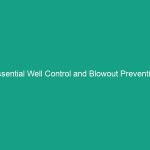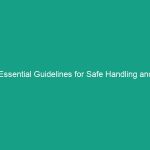Introduction
Good morning team! Today, we’re going to discuss an essential health and Safety topic: Must-Know Silica Dust Dangers and Safety Measures to Protect Yourself. Silica dust is a significant hazard that many of us might encounter in our daily work, especially in construction, mining, and manufacturing. Understanding the dangers associated with silica dust and knowing how to protect ourselves is crucial for maintaining a safe workplace. So, let’s dive in!
Understanding Silica Dust
Silica dust is a fine particle that comes from various materials, including sand, stone, and concrete. When these materials are disturbed, silica dust is released into the air. This dust can be inhaled, posing serious health risks to employees.
Why is this important? Silica is recognized as a carcinogen, meaning it can cause cancer, and prolonged exposure can lead to lung diseases, including silicosis, chronic obstructive pulmonary disease (COPD), and even kidney disease. Common misconceptions include the belief that silica dust is only a concern in heavy industrial settings. In reality, it can be present in various jobs, from construction to glass manufacturing.
Key Hazards, Risks, and Safety Considerations
Ignoring silica dust Hazards can lead to severe health consequences. Here are some specific risks:
- Respiratory Issues: Inhalation of silica dust can cause serious respiratory problems, including chronic bronchitis and lung cancer.
- Silicosis: This incurable lung disease results from long-term exposure to silica dust, leading to inflammation and scarring of the lungs.
- Decreased Lung Function: Over time, exposure can lead to permanent lung damage and decreased lung function.
Real-world consequences of ignoring these risks are evident. Workers have faced serious health issues after years of exposure without proper Safety Measures in place, emphasizing the need for vigilance and adherence to safety protocols.
Best Practices, Procedures, & Actionable Advice
To protect yourself and your colleagues from silica dust hazards, follow these essential safety Procedures:
1. Use Proper Personal Protective Equipment (PPE)
Always wear appropriate PPE, including:
- Respirators that are certified for silica dust protection.
- Safety Goggles to protect your eyes from dust irritation.
- Protective clothing to prevent skin contact.
2. Implement Engineering Controls
Use tools and equipment that minimize dust production. Here are a few examples:
- Water sprays or misting systems to suppress dust while cutting or grinding.
- Vacuum systems equipped with HEPA filters to capture dust at the source.
- Enclosed workspaces to contain silica dust.
3. Safe Work Practices
Adopt safe work practices to minimize exposure:
- Schedule wet cutting or grinding operations whenever possible.
- Ensure proper ventilation in work areas.
- Limit the number of workers in high-exposure areas.
4. Regular Training and Awareness
Conduct regular training sessions to ensure everyone is aware of the dangers of silica dust and the necessary safety measures. Use real-life case studies to illustrate the importance of these practices. For instance, a construction worker who ignored PPE experienced severe respiratory issues, underscoring the need for compliance.
Regulations, Standards, and Compliance
Understanding the Regulations surrounding silica dust is crucial for compliance and Workplace Safety. The Occupational Safety and Health Administration (OSHA) has established permissible exposure limits (PELs) for silica dust. Adhering to these Standards is not only a legal requirement but also a critical aspect of protecting your health.
Compliance with safety regulations helps maintain a safer work Environment, reduces the risk of health issues, and can protect against potential legal implications for the company. Be sure to familiarize yourself with osha standards, as well as any company-specific safety protocols.
Employee Engagement & Discussion
Let’s take a moment to engage in a discussion. What safety challenges have you encountered related to silica dust? Have you ever experienced issues with dust control on the job? Sharing experiences can help us learn from one another and improve our safety practices.
Conclusion & Key Takeaways
In conclusion, understanding the dangers of silica dust and implementing safety measures is vital for protecting ourselves and our colleagues. Remember these key points:
- Always wear appropriate PPE.
- Utilize engineering controls to minimize dust exposure.
- Adopt safe work practices and conduct regular training.
- Stay informed about regulations and compliance standards.
Prioritizing safety is everyone’s responsibility. Thank you for your attention and commitment to maintaining a safe workplace. Let’s work together to ensure we all go home healthy and safe at the end of the day!


